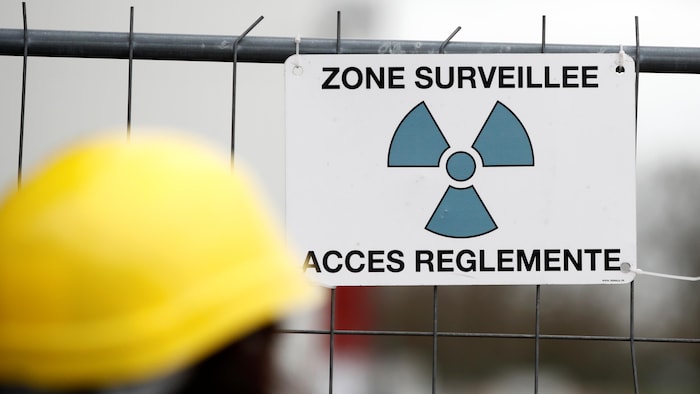Open in full screen mode The “Canadian deep geological repository” must be built at a depth of more than 500 meters, which corresponds approximately at the height of the CN Tower. The exact depth will depend on the local geology. (Archives) Radio-Canada A crucial step is on the horizon for Canada's ambition to bury its nuclear waste. Two communities of Ontario must decide whether to accommodate Canada's nuclear waste disposal project. This is where millions of containers of spent nuclear fuel will be placed in a network of rooms connected by cavernous tunnels, some 550 meters deep. The Ojibway Nations of Wabigoon Lake-Ignace and Saugeen-South Bruce must go to a vote and the ultimate decision will be made by the Nuclear Waste Management Organization (NWMO) by the end of 2024. < p class="StyledBodyHtmlParagraph-sc-48221190-4 hnvfyV">The first is between Thunder Bay and Winnipeg. The second is 175 km northwest of Toronto. Although NWMO officials say they are confident that at least one region will accept, two refusals would be a major setback for the $26 billion project. Loading ELSE ON NEWS: Israel continues its strikes in Gaza, where the death toll among civilians is increasing If both regions say no, we'll have to start all over again, said Lise Morton, NWMO vice-president of site selection. “As a country, we would then be putting off solving this problem until the next generation. In Ignace, the city is asking residents to participate in a “will study” that should guide the city council’s decision. This study is ongoing and residents will have until spring 2024 to comment. It is the municipal council that will make the ultimate decision whether or not to accept the NWMO's proposal. On the South Bruce side , a referendum is planned in the latter months of the year. According to Mayor Mark Goetz, the plan could create many direct and indirect job opportunities. However, many people in the affected communities remain skeptical. The activist group We the Nuclear Free North opposes the location of the tomb on the potential site between Tunder Bay and Winnipeg. And in South Bruce, about 20 percent of the population is a member of Protect Our Waterways, the main opposition group, the mayor estimates. The association is particularly concerned about the possibility of water being contaminated by nuclear waste. This scenario is, however, unlikely, according to Ulf Stahmer, chief transport engineer at the NWMO. In the planned repository, the radioactive materials would be placed under several layers of protection, and for there to be contamination, everything must fail, he assures. He explains that each barrier provides a unique, self-contained level of protection. The outermost protective layer is the geosphere, a natural rock barrier. The chosen rock formation will be not very permeable, which will greatly limit the movement of groundwater. The next layer is bentonite clay which would absorb any possible radioactivity, he adds. Bentonite clay contains carbon steel containers, coated with copper to prevent corrosion. These spent nuclear fuel containers will contain fuel bundles made of corrosion-resistant zirconium alloy. These bundles contain nuclear fuel pellets that do not dissolve, says Mr. Stahmer. Critics of the project still remain fearful. This is all just a big test, says Brennain Lloyd, of the group We the Nuclear Free North. No one has done it before, he recalls. The NWMO is currently working on developing agreements with affected communities. These agreements will include a mechanism to change the scope of the project, Morton says. Canada's current reactor fleet will produce approximately 5.5 million bundles of irradiated or spent nuclear fuel. Spent fuel rods are stored in containers with thick concrete walls lined on the outside with a steel plate. These containers are designed to last 50 years, so they are not considered a long-term solution, says Morton. This fuel spans millennia, she says. It is therefore undesirable to impose the burden of monitoring this fuel on future generations. Once ;a site will have been chosen at the end of 2024, this will only be the beginning of the process, she specifies. The SGDN estimates that& #x27;It will take approximately 10 years to obtain regulatory approvals, then 10 years for construction. The spent fuel will be buried over a period of approximately 50 to 60 years and then enter an extended monitoring phase for approximately 70 years. < em>With information from The Canadian Press
Israel continues its strikes in Gaza, where the death toll among civilians is increasing
Nuclear waste disposal site in Canada: decision taken in 2024

